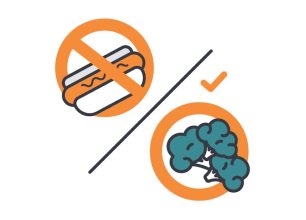Increasing your heart rate helps you burn excess calories! There are many ways to increase your heart rate. Some of these include:
- Cardio such as brisk walking, swimming, pickle ball, biking, tennis, and taking the stairs.
- Weight training with dumbbells or exercise bands — this also strengthens your muscles!
- Push mow your lawn or walk while playing golf instead of using a golf cart.
Finding your Target Heart Rate
To make sure you are getting your heart rate high enough, you can calculate your target heart rate. This is your ideal heart rate when exercising.
To find your target heart rate, first subtract your age from 220. The number you get is your maximum heart rate. Next, you will take 70% of your maximum heart rate. This is your target heart rate for moderate-intensity physical activity. Try to stay close to your target heart rate, and do not exceed your maximum heart rate.
For example, if you are 60 years old, you will first subtract your age from 220 (220-60=160). Next, you will take 70% of 160 (160 x .70 = 112). This is your target heart rate.
You can use a FitBit or Apple Watch to keep track of your heart rate and breathing while exercising. Below are more guidelines to gauge your activity level:
- When participating in moderate-intensity activity, your breath will quicken but you should not be out of breath. At this level of activity, you should be able to carry on a conversation but not sing. You will also begin to sweat after ~10 minutes.
- Conversely, when you are doing more intense activity, your breathing will be deep and rapid. It only takes a couple of minutes to start sweating, and you can hardly talk without pausing to take a breath.
TIP: To find your target heart rate, first subtract your age from 220. The number you get is your maximum heart rate. Next, you will take 70% of your maximum heart rate. This is your target heart rate for moderate-intensity physical activity. Try to stay close to your target heart rate, and do not exceed your maximum heart rate.
Published on November 23, 2022

